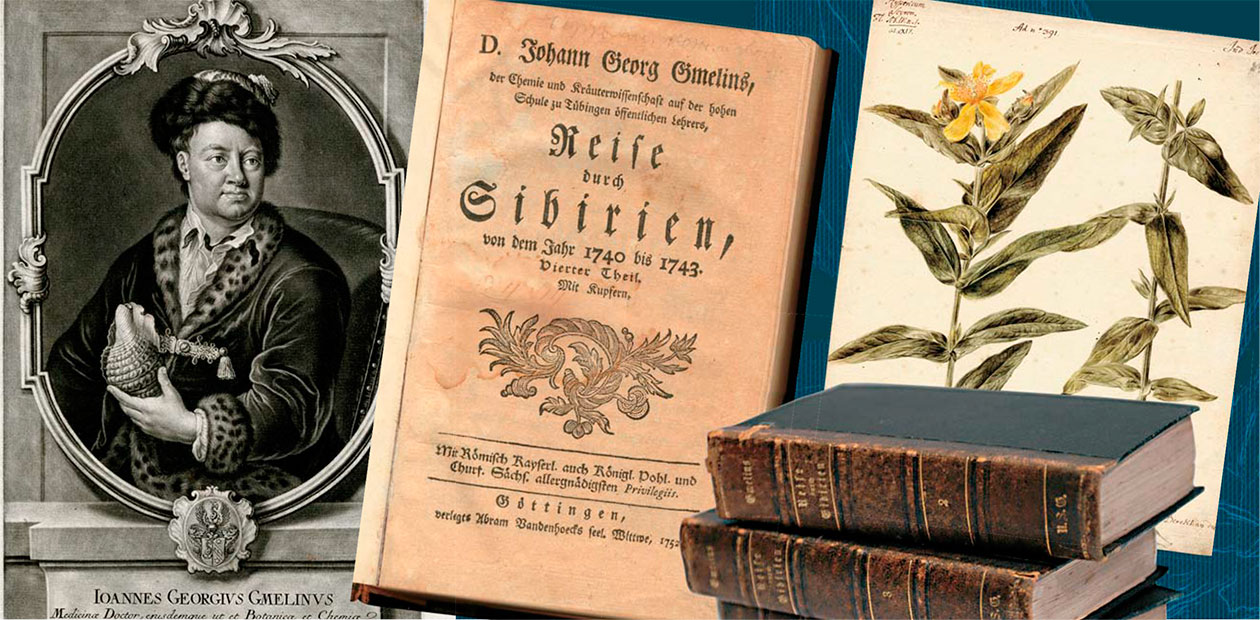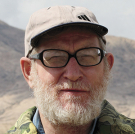At the Intertwining of Times and Fates: “Father of Botany” Johann Georg Gmelin
Botany is special as a science. At the core of its knowledge lies the herbarium. The species of flowering plants alone amount to nearly 250,000 on our planet Earth, and the name of each plant is necessarily associated with a specific herbarium sheet, a specimen. If any such sheet goes missing, the plant will remain nameless. In order to collect herbariums, hundreds of botanists undertake long and, sometimes, dangerous journeys. It is neither profit nor glory that they go after but the hope to find a plant still unknown to science and make the first description of it and give it a name.
With an area of about 10 million km2, Siberia had long been a “botanical Eldorado.” Only in the middle of the 18th century, when about a hundred and fifty years had passed after Yermak’s conquest of Siberia, scientists came to realize that nearby lay a vast unexplored territory full of unknown plants. The botanical study of Siberia coincided with two major events: the opening of St. Petersburg Academy of Sciences, established by Peter the Great, and the vigorous exploration of Siberia. The First and, especially, the Second Kamchatka Expeditions became crucial events of the 18th century. The success of these enterprises was due to the participation of the first Russian academicians, and the plants they brought from their journeys aroused admiration among European botanists and gardeners and enriched the world’s collection of cultivated plants.
Today, we cherish the memory of those who accomplished a real scientific feat, discovering the botanical treasures of Siberia, and at the top of this list is the name of Johann Georg Gmelin, a Russian academician of German origin, who was called the “father of botany” by his outstanding contemporary Carl Linnaeus, the reformer of biology
Fathers of botany are not forgotten;
Their works are immortal
“Today is a remarkable day because we are celebrating two events,” old Johann straightened his professor’s cap, which he was immensely proud of, “the birthday of our son Johann and the day he graduated from the university.”
It had never happened in ancient Tübingen that a man so young would come out of the university, an establishment revered throughout Europe: in 1725, the “son Johann” was only 16 years old! Most of his peer students had long grown beards and been getting involved with lovely women, but young Johann, whose mustache was only beginning to sprout, would blush diffidently at a teasing glance thrown at him by a playful maid.
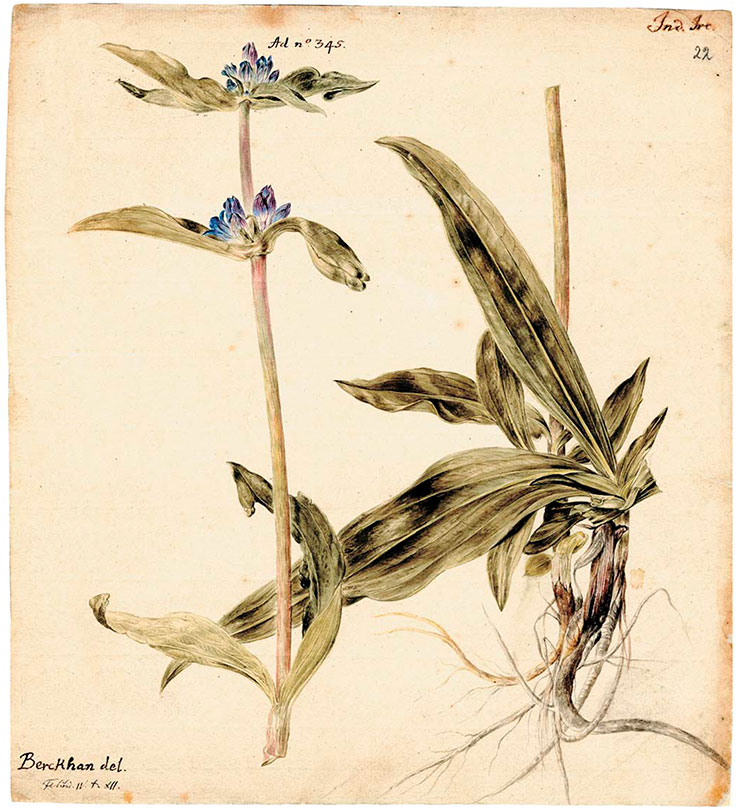
Old Johann Gmelin was very proud of his son. He himself was the first professor of chemistry in the dynasty, and he believed that his son, Johann the Younger, would definitely become a great scientist. And there was every reason for this. Endowed with an excellent memory, Johann could memorize everything his teachers said.
His teacher of physics (and family friend) was Georg Bernhard Bilfinger, who stood out for his excellent rhetoric and infallible logic. Not only was he one of the most remarkable followers of the great Leibniz but also a brilliant teacher. His lectures, graced with simplicity of presentation and his natural gift to see the practical side in every subject, resonated enormously with the audience.
Another teacher of Johann, the botanist and physiologist Johann Georg Duvernoy, was distinguished by his clear and firm views on the unity of nature, which were much disapproved of by theologians and hindered his career. His students, however, benefitted from his views as they enabled them acquire a complete picture of a living organism, be it a plant or an animal.
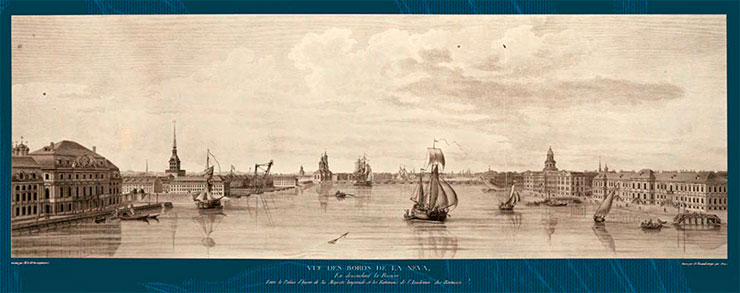
Sadly, the teachers of Johann Gmelin were not present at the solemn family dinner on the occasion of his graduation from the university. Unable to withstand the persecution of church hypocrites, who made it clear that neither Duvernoy nor Bilfinger would ever become ordinary professors within the walls of the University of Tübingen, they left for distant Russia, having received, under the patronage of Count Golovin, an invitation to the newly born Academy of Sciences and Arts in St. Petersburg.
Another thing that cast a shadow over the family celebration was that Johann himself could not find a position at his university. Germany was barely recovering from numerous devastating wars, so he decided to follow the advice of Bilfinger and also go to Russia in the summer of 1727.
By some heavenly coincidence, in the same summer of 1727 in a remote corner of Northern Sweden, the rector of a local gymnasium was writing a letter of evaluation of Carl Linnaeus, a graduate of his institution, and was clearly dissatisfied with him: “Young people in schools can be likened to young trees in nurseries. Occasionally, it so happens that the wild nature of a tree resists cultivation in spite of all nurture. But transplanted to another soil, the tree becomes ennobled and bears fruit. It is only with this hope that the young man is allowed to go to university, where he will find, perhaps, a climate favorable for his development” (quoted from: Bobrov, 1979).
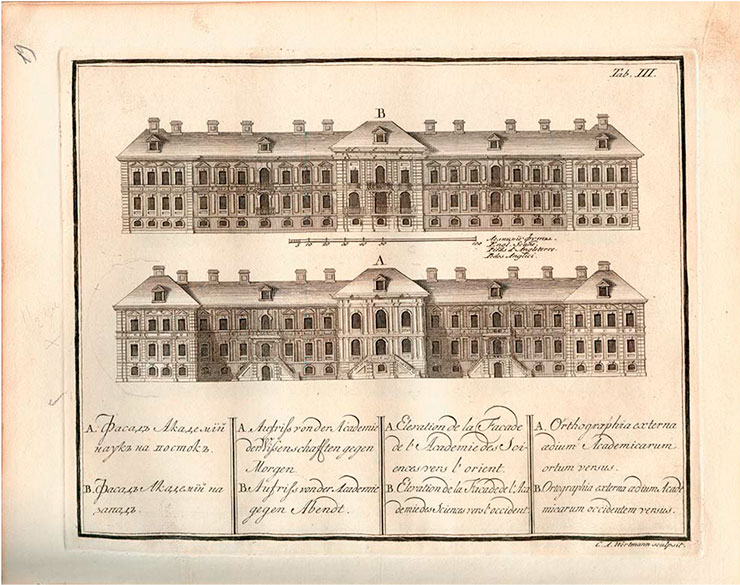
The “ignoramus” differed obviously from his peers. He was not good at Latin, and one could not find his way to science without knowing Latin. Nevertheless, after graduating from gymnasium at the age of 20, Linnaeus entered the university in the small town of Lund.
In the same year, Gmelin-the-father wrote a letter to Laurentius Blumentrost, President of Petersburg Academy of Sciences, and sent a collection of natural fossils as a gift to the Kunstkamera. “Two young men are setting out for Petersburg, one of whom is my son, and the other is Christian Gottlieb Schwenter, born in Dietfurt of Pappenheim. I humbly recommend them both to Your Excellency. As for the former, I also respectfully offer you gratitude for the favor you showed to him, on the recommendation of Herr Bilfinger, and I wish that Your Excellency finds him worthy” (quoted from: Pekarskii, 1870).
“Establish an Academy in which languages would be taught, as well as other sciences and noble arts…”
With a letter of recommendation and a collection of fossils, Gmelin arrived in St. Petersburg in 1727.
It was a notable year for Petersburg Academy. Before Gmelin, it accepted on the recommendation of the physicist and mathematician Daniel Bernoulli, who himself was 25 years old, 19‑year-old Leonhard Euler, who would become one of the greatest mathematicians in history. Two years earlier, 20‑year-old Gerard Friedrich Miller, back then a half-educated student, also arrived in St. Petersburg to join the Academy (later he would become Gmelin’s friend and senior comrade on his journey to Siberia).
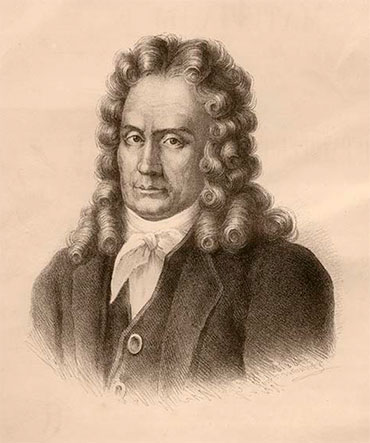 At the suggestion of the president of the Academy, on July 27, 1727, Euler and Kraft were recommended for professorships. It was an unprecedented case for science of all times as the oldest one of them – the physicist Georg Wolfgang Kraft – was only 26 years of age.
At the suggestion of the president of the Academy, on July 27, 1727, Euler and Kraft were recommended for professorships. It was an unprecedented case for science of all times as the oldest one of them – the physicist Georg Wolfgang Kraft – was only 26 years of age.
Gmelin arrived at his own expense, intending to serve as a volunteer until a suitable professorial vacancy opens up. On August 31 of the same year, Gmelin was approved as an adjunct, and the following three years of his life were devoted to working at the Kunstkamera and the Cabinet of Rarities and Natural History. By that time, these museums had accumulated a huge body of factual material, which was coming there from all over the world by the decree issued by the late emperor Peter I. Gmelin worked on compiling catalogues of minerals and ancient fossils, a painstaking and time-consuming task.
While the issue of his approval as a professor was being decided, he was paid 10 rubles a month for expenses, in addition to the apartment, firewood, and candles. During the reign of Catherine I, this was not that small of a sum (one ruble could buy you a bull calf, but a pair of silk stockings cost four rubles…), and full-time professors were paid 50 rubles or more.
It should be noted that Gmelin arrived in Russia not at the best of times. On January 28, 1725, Peter I died. For a while after his demise, the force of inertia and the memory of the emperor’s associates, as well as the will of his widow, Catherine I, were able to keep on the pursuits aimed at consolidating and developing the Russian State. But on May 6, 1727, Catherine, too, passed away. The black streak brought by the reign of Empress Anna Ioannovna began.
Petersburg Academy – Peter’s brainchild – became redundant for society, but it continued to live because the academicians did not interfere in politics, and their ongoing disputes, which often turned into fistfights, were amusing to the nobles. Also, the amount of 24,912 rubles allocated for keeping the Academy, the money that came from custom duties and royalties collected from the cities of Narva, Derpt, Pernov, and Ahrensburg, did not burden the budget. And on top of all that, it was not the uptight Englishmen or fussy Italians who were invited to the Academy but the Germans, who were “our folk,” from the point of view of Empress Anna’s minion Ernst Johann von Biron, a Courland nobleman.
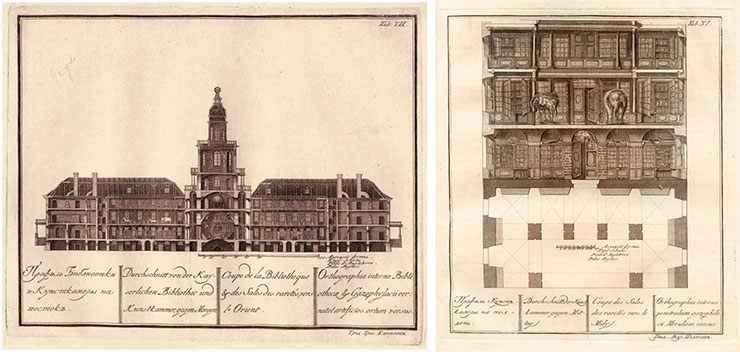
Since no decree was issued that would expressly preclude the Academy, it existed by the will of Peter. And in pursuance of this will, Captain Vitus Bering, together with lieutenants Alexei Chirikov and Martin Shpanberg, set off on the first Kamchatka expedition in February 1725.
A brief note written by the emperor with his own hand instructed Bering as follows: “1. One or two boats with decks ought to be built in Kamchatka or another such place. 2. On these boats, they ought to sail past the land that goes to the North, and by hope (one does not know the end of it) it seems that that land is part of America. 3. And in order to look for where it meets America, and in order to reach a town of European possessions, or if they see any European ship, they ought to find out from them what they call it, and write it down, and go ashore themselves and take a genuine statement and, having put it on the map, return here” (adapted from: Trudy arkhiva…, 1940).
Bering traveled until 1730, but his letters were reaching the Academy to provide evidence about the vast territory of Siberia and Kamchatka, and the scholars were vigorously discussing Bering’s communications. This alone inspired them and helped them endure the hardships of living in Russia. So, on January 9, 1729, Academician Joseph-Nicolas De L’Isle wrote a letter to President Blumentrost about the necessity to continue the exploration of the eastern regions of Russia and about the significance of Bering’s first voyage.
To Terra Incognita
Finally, in January 1731 – three and a half years after his arrival in Russia – Gmelin was elected a member of Petersburg Academy with the rank of professor of chemistry and natural history.
By that time, Carl Linnaeus, under the supervision of Professor Olof Rudbeck Jr., had given his first lecture at Uppsala University. The lectures given by Linnaeus, back then a modest demonstrator of the university’s botanical gardens, attracted up to 400 students while those given by full-time professors were usually attended by no more than 80 students.
Many years later, in honor of his first botanist mentor, friend, and patron, Linnaeus would give the name of Rudbeckia to one of the new plants from North America: “To perpetuate the glory of your name, I called it Rudbeckia, by the power vested in all botanists and, therefore, in me. It shall make your name immortal and speak of it before kings and princes, before botanists and doctors, before all people, so that even if the whole world falls silent, then Rudbeck plants shall speak of it as long as nature exists… ” (quoted from: Bobrov, 1970).
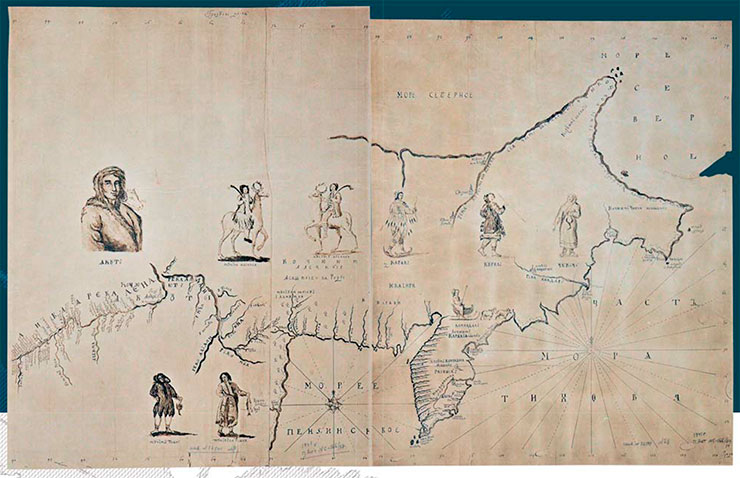
Following Rudbeck’s advice, Linnaeus approached the Uppsala Scientific Society with a project proposal to travel to Lapland. He was to cover 1500 miles, having spent only 400 thalers. In May 1732, he set out from Lund on an unprecedented solitary journey.
As Linnaeus himself wrote, of all clothes he had only a short caftan with a sealskin collar, leather trousers, a pigtail wig, a strong green hat, and high boots. Of the instruments he had a bag of tanned leather, which contained a bunch of books, one shirt, two pairs of cuffs, two nightcaps, an inkwell, a box for quills, a microscope, a pack of paper for a herbarium, and a mosquito net. Of the weapons he had a dagger, a hunting rifle, and a cane, on which measures of length were cut.
The journey was very difficult, and yet on September 10, Linnaeus returned to Uppsala as a winner. He made this journey alone – without a convoy, without thousands of herbarium sheets, without artists, without guards. He kept everything in his head and in his journals, where, suffering from cold and malnutrition, he wrote down his observations and descriptions of unknown plants.
That same summer in Russia, the Academy got an order issued by Her Imperial Majesty the Autocratrix, in which she instructed to send a professor and two students to accompany Captain Commander Bering and conduct scientific investigations. The Academy considered the order and soon prepared a response, which ran as follows (paragraph six): “…the professors needed for this: Ivan Georgy Gmelin, professor of chemistry and natural history, and Delisle de la Croyère, Ludovic, professor of astronomy. We recognize these people as very capable in this matter and have no doubts that it be performed according to their advice, if other conditions, especially for their persons appropriate, are met, which would reward the troubles, labors, and hardships of the journey” (quoted from: Trudy arkhiva…, 1940).
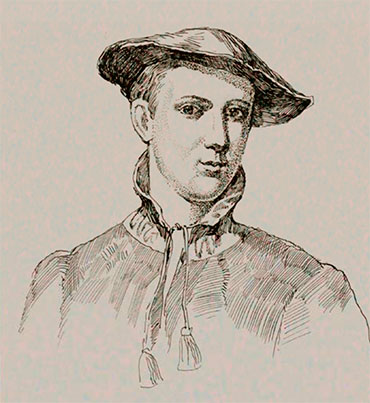 A difficult period began of preparing for the expedition. And this is when a few strange things happened. Instead of Gmelin, it was Gerard Friedrich Miller who participated in the subsequent correspondence between the Academy and the Senate. Miller himself wrote about that as follows: “Captain Commander Bering, with whom I was well acquainted, aroused in me a desire to travel even when there was no possibility for me to do so. Ober-Secretary Kirilov, whom Bering told about that, wished that I offered myself to the Academy instead of Gmelin. The Academy had nothing against that. On February 26, 1733, the case was submitted in writing to the Senate, and on March 23, their permission was received. I was glad of this because in this way I cleared off the turmoil at the Academy and, free from hatred and enmity, could enjoy peace, depending on myself only” (quoted from: Pekarskii, 1870).
A difficult period began of preparing for the expedition. And this is when a few strange things happened. Instead of Gmelin, it was Gerard Friedrich Miller who participated in the subsequent correspondence between the Academy and the Senate. Miller himself wrote about that as follows: “Captain Commander Bering, with whom I was well acquainted, aroused in me a desire to travel even when there was no possibility for me to do so. Ober-Secretary Kirilov, whom Bering told about that, wished that I offered myself to the Academy instead of Gmelin. The Academy had nothing against that. On February 26, 1733, the case was submitted in writing to the Senate, and on March 23, their permission was received. I was glad of this because in this way I cleared off the turmoil at the Academy and, free from hatred and enmity, could enjoy peace, depending on myself only” (quoted from: Pekarskii, 1870).
Gmelin fell ill tactfully right at that time. Apparently, he, too, suffered from the “turmoil” caused by the vile policy of Johann Daniel Schumacher, back then the Secretary of the Academy. Or, perhaps, the friends wanted to go on that journey together because there were no frictions between them later on. Miller left a cunny recollection of those times in his diary, where he wrote that Gmelin was cured by consuming plenty of good old Rhenish wine.
By order of the Senate, the members of the expedition retained their positions and salaries and received additional travel money. The latter were partly paid from the Chancellery and partly from the Siberian province. Each academician was assigned a tailor, a carpenter, a drawing artist, and a taxidermist as escorts. And so it happened that instead of one professor, as demanded by the stubborn Bering, the Great Northern Expedition emerged, which became, perhaps, the major scientific expedition of the 18th century.
“Almost everything we saw was new to us”
On August 8, 1733, a science detachment composed of the academicians Gmelin; Miller; de la Croyère; six students, including the future first Russian academician Stepan Krasheninnikov, a botanist and geographer; two artists; two hunters; two mineralogists; and twelve soldiers left St. Petersburg for the unknown Siberia. On March 3, they unhurriedly arrived in Tobolsk. It was here that they collected plants and animals previously unknown to science.
In May next year, the academicians sailed up the Irtysh River; on June 27, they reached the town of Omsk and then moved even further up the river, repeating the path of Yermak.
The West Siberian plains with their boundless grass steppes gave way first to small ridges and then to mountains. The travelers reached the village of Ust-Kamenogorsk and visited the Kolyvan factories. Then, they headed straight through the low-rise mountains towards the town of Kuznetsk, in which they arrived on September 17.
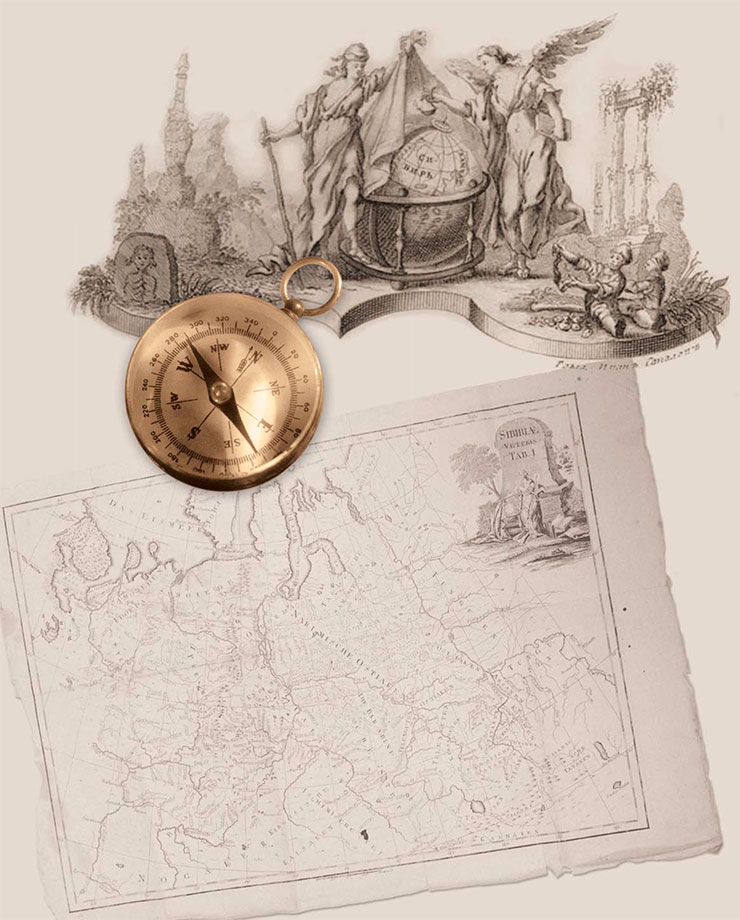
The expedition detachments comprised more than 500 scientists, officers, sailors, soldiers, surveyors, and other participants, and the auxiliary personnel hired in the course of the works amounted to several thousand people. Four northern detachments were organized in order to explore the opportunities offered by the Northern Sea Route and to study the Arctic Ocean and the Arctic coast of Asia. Using tiny vessels, including common rowing boats, riding by reindeer and dog teams, as well as walking on foot, the participants of the northern detachments described and mapped more than 13,000 km of the coast of the Arctic Ocean as well as the lower and partially middle reaches of all the major rivers from the Pechora to the Kolyma; they collected data on ice conditions and tides and on the climate and population of the North and Northeast.
The first Pacific detachment sailed to the shores of North America only eight years after leaving St. Petersburg – this time was spent preparing the expedition and building the packet ships St. Peter and St. Paul. The two ships, which lost each other in the fog, reached the shores of America almost simultaneously and discovered several islands. The task of the second Pacific detachment was, among other things, to map the Kuril Islands and establish connections with Japan.
Studying the nature and natural riches of the interior regions of Siberia, as well as economy, history and ethnography of indigenous peoples, was the goal of the academic detachment, which initially included professors of the Academy of Sciences: historian G. F. Miller, naturalist J. G. Gmelin, and astronomer L. De L’Iisle de la Croyère; students: S. P. Krasheninnikov, A. Gorlanov, V. Tretyakov, L. Ivanov, and F. Popov; an interpreter, artists, and surveyors. During the expedition, other scientists joined the detachment, including the Academy adjuncts G. W. Steller and J. E. Fisher. The actual directors of the detachment were the close friends Miller and Gmelin, with the undoubted leadership of Miller, who was older as well as more experienced and assertive.
The academic detachment left Petersburg on August 8, 1733, and returned on February 15, 1743; some of its participants remained in Siberia for another three or four years. The routes covered a vast territory from the Southern and Middle Ural Mountains to Yakutia and Transbaikalia, from the southern borders of Siberia to the lower reaches of the Irtysh, Ob, Yenisei, and the middle reaches of the Lena. The full detachment could not reach Kamchatka; therefore, they sent Krasheninnikov, who was subsequently joined by Steller.
The scientific heritage left by the members of the academic detachment is so extensive that we cannot truly appreciate it even today, when many books and articles have been written about it. A colossal amount of most valuable information is contained in the journals and travel descriptions, many of which were illustrated by the artists of the detachment. The expedition members recorded magnetic, barometric, and temperature data and set up the first meteorological stations in a few towns. They very accurately determined the coordinates of a vast number of geographical objects, which served as reference points in compiling dozens of regional maps of Siberia, maps of geographical discoveries in the Arctic and Pacific Oceans, and, subsequently, “general” maps. A key aspect of the expedition’s activities was to conceptualize projects aimed at the development of Siberia (Miller and Gmelin’s projects on the organization of medical care, on the use of the medicinal resources of Siberia, etc.).
The Second Kamchatka expedition, which required the mobilization of huge financial, material, and human resources, became an important stage in the development of the vast Trans-Ural region. The selfless efforts undertaken by the members of the academic detachment turned the scientific discovery of Siberia into a fait accompli.
The young people (Gmelin was four and twenty, and Miller was five years older) were obviously enjoying their travel. Miller wrote about their expedition: “The journey along the Irtysh River and the ride after that before the other things in Siberia were the most pleasant. At that time, we were still very inspired since restlessness, shortages, and dangers did not bother us yet. We visited such lands that were by nature very superior to many others, and almost everything we saw was new to us. We indeed came to a flower-filled city of winds, where herbs grew for the most part unknown; to a menagerie, where we saw the rarest Asian animals in great numbers right in front of us; to a cabinet of ancient pagan cemeteries and the various remarkable monuments stored there. In one word, we happened to be in a country where no one had been before, no one who could tell any news about those lands. And this cause for making new scientific trials and inventions was nothing but a great pleasure to us” (adapted from Sokolov and Parnes, 1993).
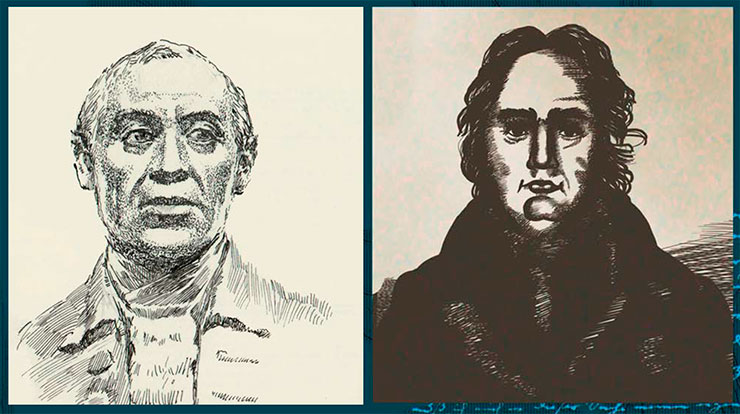
The first year brought no disappointment to the travelers. Gmelin’s botanical impressions from the south of Siberia were so great and so diverse that they inspired botanists for a century ahead to make pilgrimages along the route Omsk–Barnaul–Ust-Kamenogorsk–Kolyvan.
ON THE BARNA-AUL RIVER Johann Gmelin could have also made the first description of the area where the city of Barnaul would later appear: “On the 29th in the evening, at 3 o’clock, we set off again, accompanied by 20 servicemen given to us by the factory. Since the time of the year was such that we could expect an attack by the Kazakh hordes, we also took with us our Semipalatinsk corporal with 15 soldiers as guards, but we let go the lieutenant and the rest of the horses, which we took partly from Ust-Kamenogorsk and partly from Semipalatinsk and Yamysheva. That evening we traveled no more than 18 versts and stopped at a small stream.“The next day at one o’clock in the afternoon we reached the Loktevka River. Two versts from where we stood, this river flows into the Charysh, where there are four villages that belong to Akinfii Nikitich Demidov and were founded by him for the sake of the factory. When we were riding that night, heavy rain caught us, and since we had made 20 versts, the horses did not go further. We had to stop in the dry steppe, where there was no fodder for the horses, no dry firewood, and no water other than that which poured from the sky. On the 31st in the morning we rode up to the Alei River. We found here ready-made replacement horses, which were collected in one of the aforementioned Demidov villages. We were happy that we saw no signs of the Kazakh horde, so we were no longer scared and let go here the Semipalatinsk corporal with his 15 subordinates.
“On the first of September at 2 o’clock in the morning, we arrived at a small lake, having ridden all night in heavy rain with a thunderstorm. After lunch at 2 o’clock, we reached the Barna-aul River, near which stands a small Demidov village. Not far from the Barna-aul, from its source to its mouth, the area is covered with a pine forest mixed with birch, which is called the Barnaul forest. We stopped at the Barna-aul until midnight, and the next day at 9 o’clock, we reached the Kosmala River and a village of the same name. A few versts before it, where we crossed the Kosmala and a little further, there were a few small villages, each composed of a few houses. From the first one, a pine forest began with an admixture of birch; it stretched all the way to the village where we stopped and still further for several versts. I emphasize this because we hardly saw any forest all that summer.” (quoted from Borodaev and Kontaev, 2000)
Gmelin was delighted with Western Siberia, with its potential economic power. Subsequently, he would write in Flora Sibirica: “The lands lying between the Ob and the Irtysh and stretching from the Zhelezinskaya Fortress to the east and north are vast steppes, are called Baraba after the Baraba Tatars who live there. These steppes are for the most part flat and swampy from plentiful lakes, most of which have fish; in many places, however, they bear clammy soil, on which bread could grow abundantly if the Tatars needed it” (quoted from Sokolov and Parnes, 1993).
Interestingly, almost a hundred years after, in 1829, this path would become the route of the famous German naturalist and traveler Alexander von Humboldt, but he would gain completely different impressions from the Baraba steppes.
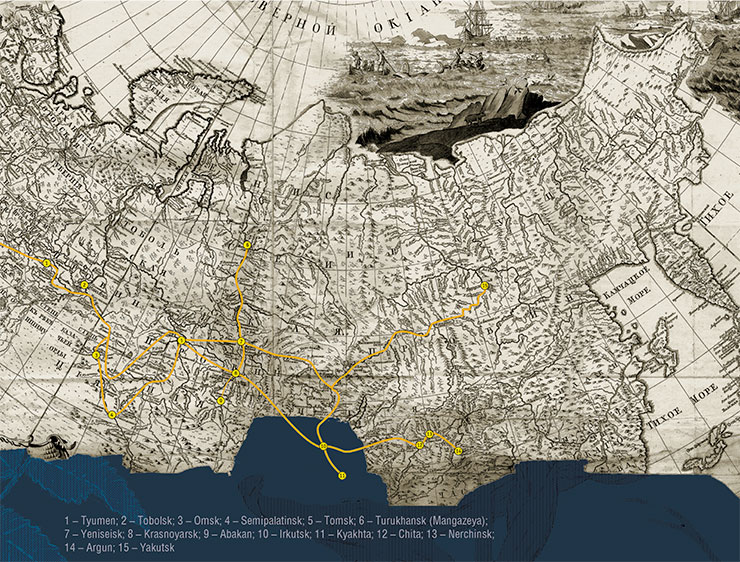
The winter of 1734–1735 was severe, which greatly complicated the journey. On January 5, in Yeniseysk, Gmelin recorded the lowest temperature known to science by that time, i. e., 120 degrees below zero Fahrenheit, i. e., almost 49 °C. Apparently, it was because of him that Siberia remained for three centuries a “land of cold” for the whole Europe. For the modern climate, this temperature is, too, prohibitively low, but here we should recall that Gmelin’s journey coincided with a period called by climatologists the Little Ice Age (Zamolodchikov, 2013).
Gmelin’s journey lasted ten long years. One can imagine its route from the winter quarters: 1735, Tomsk and Selenginsk; 1736, Irkutsk and Verkholensk; 1737, Yakutsk; 1738, Kirensk and Irkutsk; 1739, Yeniseisk; 1740, Krasnoyarsk; 1741, Tomsk; 1742, Tobolsk and Turinsk. It is no exaggeration to call this unparalleled journey a scientific feat. Although a part of the material perished in a fire in Yakutsk and Gmelin never made it through to the ocean, he obviously acquired the richest collection in terms of quantity and quality.
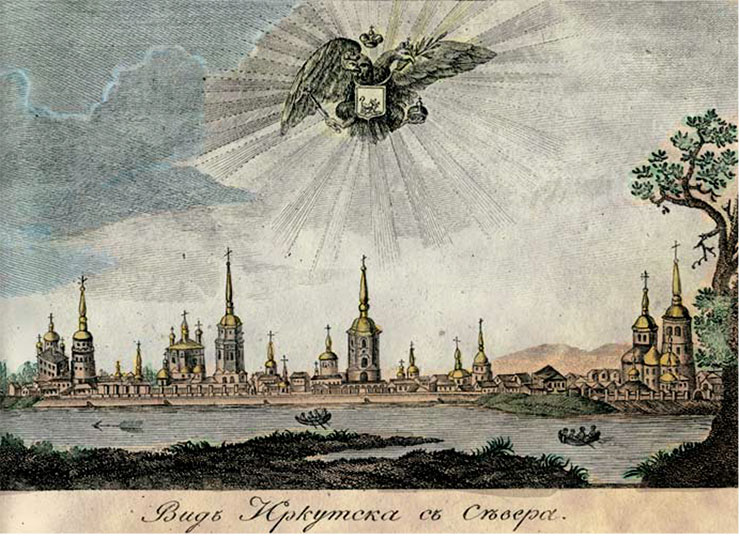
Gmelin returned to Moscow in 1743 already the great “Father of Botany,” as Linnaeus would later call him. As to Linnaeus – back in 1733, he established a program for his entire life, including the writing of books, which would determine the development of botany for centuries ahead. These include Biblioteca Botanica, intended to analyze all the books on this subject; Philosophia Botanica, dedicated to the principles of the new botany; Harmonymia Botanica, i. e., the doctrine of the harmony of botanical names; Species Plantarum, a description of all known plants with binary nomenclature. In total, the list created by the 26‑year-old Linnaeus comprised 13 topics, which he would be developing successfully throughout his life (Bobrov, 1970).
By 1741, Carl Linnaeus – already a recognized, accomplished genius, a highly esteemed physician and botanist, the first president of the Swedish Academy of Sciences – had returned from Stockholm to Uppsala. After the death of his teacher Rudbeck, he was elected professor of botany at Uppsala University. By that time he also had written his most famous work, Systema Naturae (1735).
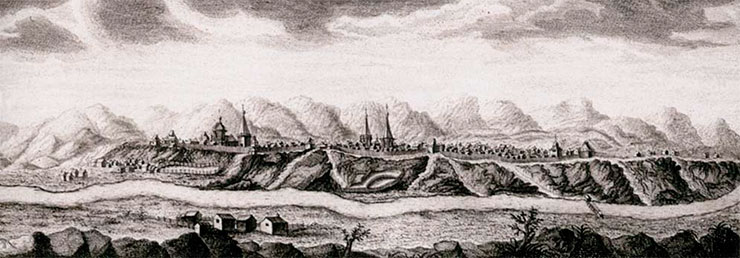
Over the previous decade, Linnaeus had been traveling all over Europe promoting his ideas. His thoughts on the new principles of systematics were enriched by the brilliant Herman Boerhaave, a Dutch physician, botanist, and chemist, who was the first to appreciate the young Swede’s genius. In Holland, Linnaeus worked with the huge collections of living plants compiled by George Clifford, the burgomaster of Amsterdam, and in France, with the herbarium collected in Asia Minor by the botanist Joseph Pitton de Tournefort and with Bernard de Jussieu’s magnificent collections of plants in the gardens of the Petit Trianon in Versailles. In England, the scientist argued with the British botanists Hans Sloane and Johann Dillenius, who were the first to harshly criticize his Systema Naturae.
As for Gmelin, he returned to Moscow after the long journey to find that his position as professor of chemistry with the Academy was taken. It was Mikhail Lomonosov who became his successor. The new academician was rather ill-mannered and, to put it mildly, was not very fond of his colleagues at the Academy, especially those of German origin. By the time Gmelin arrived from the expedition, Lomonosov’s brilliant talent had revealed itself and shone brightly with all its facets. He set up a chemical laboratory, where he conducted experiments and classes with his students. This alone was enough to understand that he became a professor of chemistry both by vocation and by right.
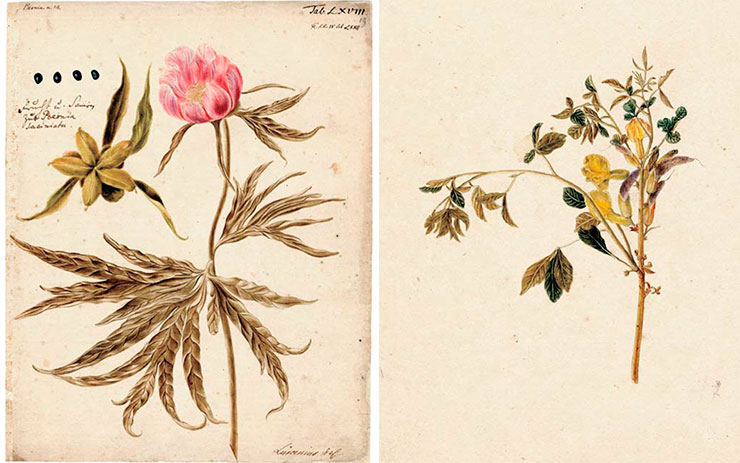
The scientists struck a good relationship straight away. Gmelin, who conceded the chair of chemistry to Lomonosov, could now depart for his fatherland with a peace of mind for the state of academic affairs, and Lomonosov highly valued Gmelin as a specialist and hard worker.
Homecoming
Gmelin returned to St. Petersburg in February 1743 and began vigorously processing the collections from the expedition, but as early as in 1744, he filed a letter of resignation to the Academy of Sciences, explaining it by his poor state of health, undermined in the Siberian expedition. But his efforts to resign were futile.
In 1746, Gmelin presented to the Academy of Sciences the first volume of his Flora Sibirica, and then for a very short time (less than a year), he oversaw the Botanical Gardens of the Academy. When his contract expired on January 27, 1747, Gmelin was relieved of the post of professor of chemistry, which had actually been taken by Lomonosov. However, on July 1 of the same year, he signed a new contract for five years as a professor of botany.
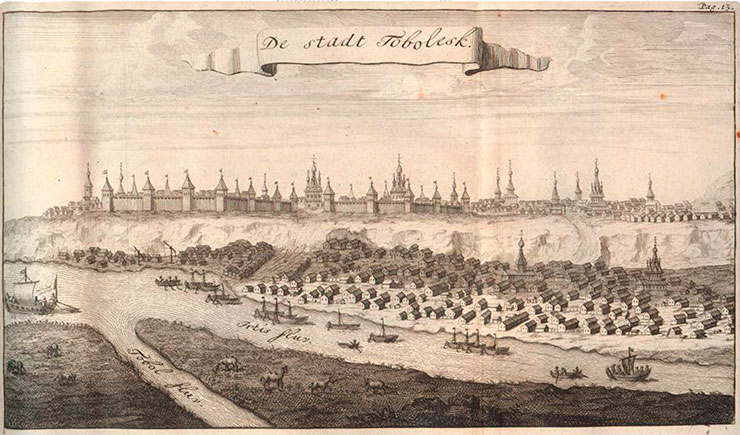
His contract stipulated the right to a yearlong vacation, which Gmelin immediately decided to use so as to visit his native Tübingen. Apparently, his close relations with Lomonosov allowed Gmelin to approach him with a request for signing a guarantee letter. The essence of the letter was that if Gmelin had left Russia for a year and had not returned by the agreed deadline, then Lomonosov, together with Miller, would have had to pay the Academy the money Gmelin received upon his departure.
The guarantee letter was signed: “We, the undersigned, hereby vouch that Herr Dr. Gmelin, according to the written promise made in the chancellery of the Academy of Sciences, concerning his return and his scientific works, will fulfill everything and we promise that if he acts against the expectations or does not return after the deadline, to pay the money given to him, 215 rubles, and half the salary, which will be paid under the overseas contract, 500 rubles, a total of 715 rubles, and to hand over his works and drawings to the Academy without any delay so that they would not be published anywhere in the world in print: of which he, Gmelin, attaches a list drawn by his own hand’ (adapted from Lebedev, 1997).
Gmelin left for Germany (for a year, as everyone believed), having taken along the materials collected during the expedition in order to continue his fundamental work Flora of Siberia, or the History of Siberian Plants.
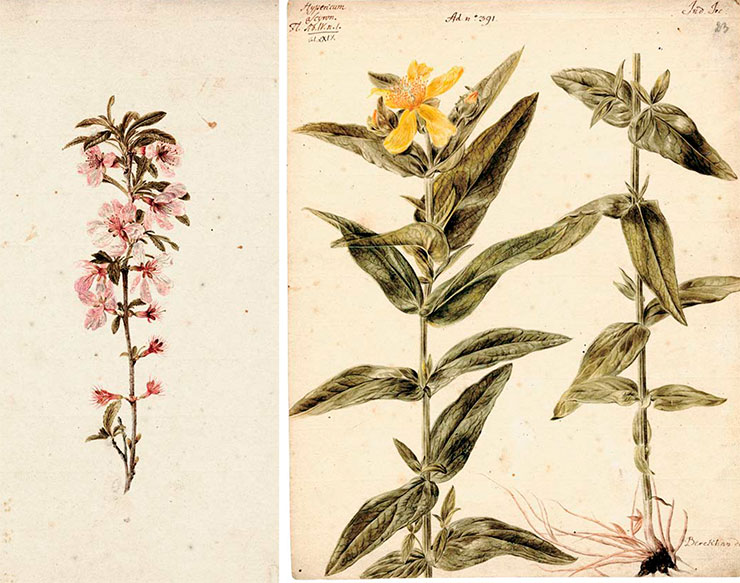
However, after his vacation was over, he did not return to Russia, and he wrote in a letter to Kirill G. Razumovsky, President of the Academy that he was staying in Germany and was appointed professor of botany at the University of Tübingen. The Academy began to withhold half of the salaries of Lomonosov and Miller as guarantors for Gmelin.
As already mentioned, Lomonosov highly respected Gmelin’s scientific integrity and for this reason alone had a purely human empathy for him. One must not forget that after the departure of Academician De L’Isle, Gmelin was, perhaps, the only truly authoritative scientist in the Academy. By violating the new contract, Gmelin, whether he wanted it or not, caused moral harm to the Academy and thereby to Russia, as well as to himself. In these circumstances, Lomonosov’s worries were due to moral, rather than material, considerations (although the latter mattered too). Lomonosov was shocked as a patriot, as a scientist, and as a man.
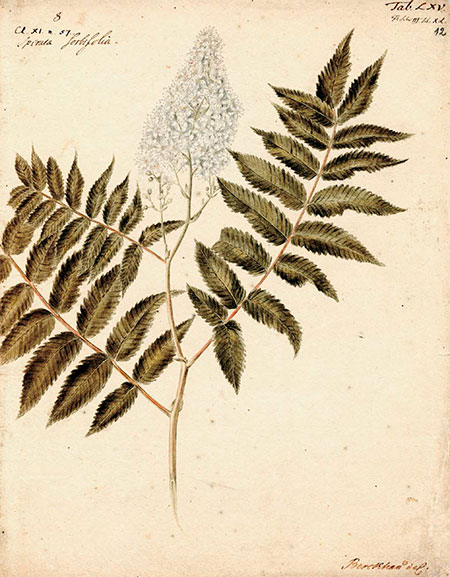 On October 1, 1748, he took his quill to tell Gmelin everything he thought about what had happened.
On October 1, 1748, he took his quill to tell Gmelin everything he thought about what had happened.
“Although I should have been angry with you from the very beginning because you forgot my considerable disposition towards you and did not send a single letter to me for the whole year, probably so that I could not remind you in my response letter about your return to Russia, I still have a reason that not only makes me, being irritated with you, write to you what is usually not written to people with a clear conscience. I truly never cease to be stunned at how you have shamelessly violated your promises, your contract, and your oath and forgot not only the goodwill that you enjoyed in Russia, but also, not caring about your own interests, honor, and glory, and not in the slightest degree about yourself, you came to the idea of refusing to return to Russia…
“All your excuses mean nothing. In Germany, a man is not held by force unless he is a villain. Your new obligations have no effect because they arose after signing a contract here, and you owe Russia a hundred times more than you owe your fatherland. As for diseases, these old Siberian excuses of yours have long been known to everyone… There is still time; everything can still be softened, and upon arrival you will work according to your contract. You are now offered two ways: the first one is that you will immediately change your mind and return to Russia honestly and, thus, avoid your eternal disgrace, live in abundance, gain fame all over the world with your work, and after the expiration of your contract, with honor and money, you will be able, at your request, to return to your homeland.
“Otherwise, all those who hate ingratitude and infidelity will forever hate and curse you. You will always be tormented by your conscience; you will lose all your glory that you have earned here with us; and you will live in eternal fear and poverty, which will always surround you. Of these two possibilities, any man would choose the former unless he had lost his mind. However, if you have seriously decided to be dead to shame and forget the good deeds of Russia, forget your promise, your contract, your oath and yourself, then please send the 357 ½ rubles due to me and hand over all the works and sketches to Professor Kraft as soon as the Academy tells him to obtain them. This, however, must be done without any delay since I am forced to live in grave poverty because of you… Yours truly offended friend and servant Mikhail Lomonosov” (quoted from Lebedev, 1997).
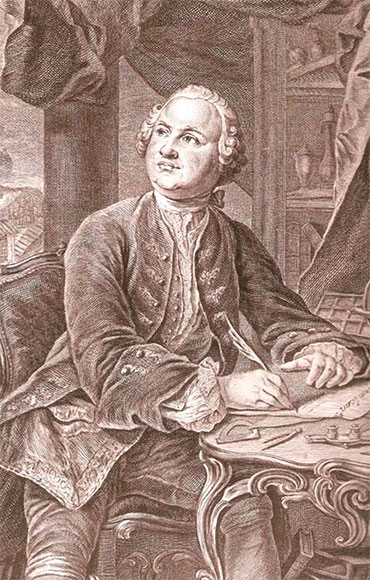 Gmelin immediately wrote back to Lomonosov and sent him the money. Despite the harsh tone of Lomonosov’s letter, he did not change his friendly attitude towards the great Russian scientist for he understood that Lomonosov was worried not only about money, which he always needed badly, but also about the prestige of the Academy, of which Gmelin was a member.
Gmelin immediately wrote back to Lomonosov and sent him the money. Despite the harsh tone of Lomonosov’s letter, he did not change his friendly attitude towards the great Russian scientist for he understood that Lomonosov was worried not only about money, which he always needed badly, but also about the prestige of the Academy, of which Gmelin was a member.
But why did Gmelin want to leave Russia so badly? The indirect reasons lay, obviously, with the realities of Russian life. On the periphery, each governor was “both tsar and god.” He could give money for the expedition, or he could refuse to do so despite the royal decree. On September 19, 1737, Gmelin wrote to Baron Korff: “The all-pervading procrastination of Siberian chancelleries presents a difficult circumstance for us on this journey. Decrees are only then menacing when they can be put to a benefit for the governor. Academician de la Croyère writes about his trip to the mouth of the Lena: ‘As for me, I am obliged to do everything that can promote science and serve the benefit of the voivode’” (quoted from Pekarskii, 1870).
Time passed slowly, but the disorder of life and the abuse of power by the governors were perpetual. Any complaint to St. Petersburg and back would travel for six months at best. But there were other difficulties too…
Vasily N. Tatishchev sent to Gmelin one exile who knew how to make melting pots, which Gmelin needed for smelting ores. But no money at all was provided for his allowance, and Gmelin had to pay him out of his own pocket. In a letter to Baron Korff, Gmelin complained: “… we are scared of all the exiles, not because of their maliciousness but because they have a deeply rooted custom of crying out “slovo i delo” whatever happens. If such a thing happened to any of our companions, then we were compelled to lose him for a while, which could be a great hindrance to our affairs” (quoted from Pekarskii, 1870).
The bottom line was that both the one who cried out the words “slovo i delo,” i. e., “word and deed,” an accusation of treason, and the one against whom the charge was brought had to be sent to Moscow for a trial, which took at least a year. And such a precedent happened in the winter they spent in Yakutsk, when a drunken assistant of the expedition painter Iohann Berckhan cried “word and deed” against another painter. This would have deprived the expedition of artists for two years. Fortunately, when the drunkard woke up, he took back his words.
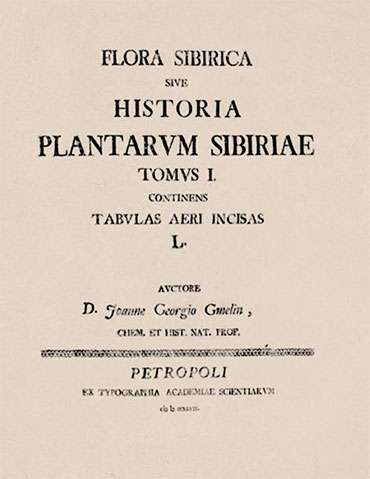 Anyway, the Russian settlers, burdened with want, could not possible understand what troubled the arrogant German botanist. Gmelin would forever harbor hostility towards the Russian people. In his expedition journals, published in Göttingen, he conscientiously described the ugly aspects of Russian life. Even today, when 250 years have passed, Russian authorities of various calibers are still scared to translate Gmelin’s bitter yet truthful words about Russia – about the prevailing drunkenness, debauchery, bribery, lawlessness…
Anyway, the Russian settlers, burdened with want, could not possible understand what troubled the arrogant German botanist. Gmelin would forever harbor hostility towards the Russian people. In his expedition journals, published in Göttingen, he conscientiously described the ugly aspects of Russian life. Even today, when 250 years have passed, Russian authorities of various calibers are still scared to translate Gmelin’s bitter yet truthful words about Russia – about the prevailing drunkenness, debauchery, bribery, lawlessness…
Another reason for his desire to leave Russia was academic squabbles. Gmelin’s first letter of resignation escalated the frictions between him and Schumacher, the “gray eminence” of the Academy, who began to interfere with his work in every possible way. Moreover, Gmelin’s health was indeed deteriorated – unlike his colleague Miller, he could not adapt to the realities of Russian society. In addition, he managed to get a chair at his home university, which he had been secretly longing for.
Having achieved European fame, Gmelin believed that he deserved peace and rest. He was almost forty years old when he met, here in Germany, a woman who became his wife. Obviously, he simply did not have enough energy to return to Russia, a country he despised.
One way or another, Gmelin stayed in Germany, where he continued to work with the herbarium and with other materials collected in Siberia. In 1754, his health deteriorated sharply. He still managed to finish the third volume of Flora Sibirica, which would be published only 13 years later under the editorship of his nephew Samuel Georg Gmelin.
Gmelin passed away on the evening of May 20, 1755. His widow handed over his herbarium to Petersburg Academy of Sciences and received 600 rubles for it. The fourth volume of Flora Sibirica was published in 1769, following the third one. However, the fifth volume, dedicated to spore plants, still remained in the manuscript throughout the 18th century: Gmelin Jr. published only a few new ferns from it. This material was considered irretrievably lost and was found only many decades later.
“No one is more worthy in botany than you”
A year before Gmelin’s death, Carl Linnaeus became a member of Petersburg Academy of Sciences. By this time, he had published his works Philosophia Botanica (1751) and Species Plantarum (1753) – the very works that revolutionized the systematics of the plant world.
The great reformer of biology, Carl Linnaeus, was the first to propose the notion of species and introduce a clear division of living beings into different taxonomic groups. He developed a binary nomenclature for the name of each species, which scientists use to this day. Even today these names are written in Latin and in italics, exactly as suggested by Linnaeus himself. His most famous work, The System of Nature (Systema Naturae), first published in 1735, had 12 editions during his lifetime. That year when his book was published Johann Gmelin was already traveling in SiberiaFrom that moment on, a new countdown began, and Gmelin could not keep up with it. He himself was a follower of the English naturalist John Ray, who was the first to divide plants into cryptogamous (spore) and phenogamous (flowering), and the latter were also divided into monocots and dicots according to the number of cotyledons in the seed. It was a progressive system of living organisms, which subsequently gave rise to Jussieu’s natural system. But the names that Gmelin gave to plants were not binary (genus and species) but polynomial, or verbose (e. g., the polynomial name of common tansy was as follows: “there is a grass named paramon, hairy in itself like black hair, and it grows in bushes near swamps, and at the top it has what looks like little yellow hats”).
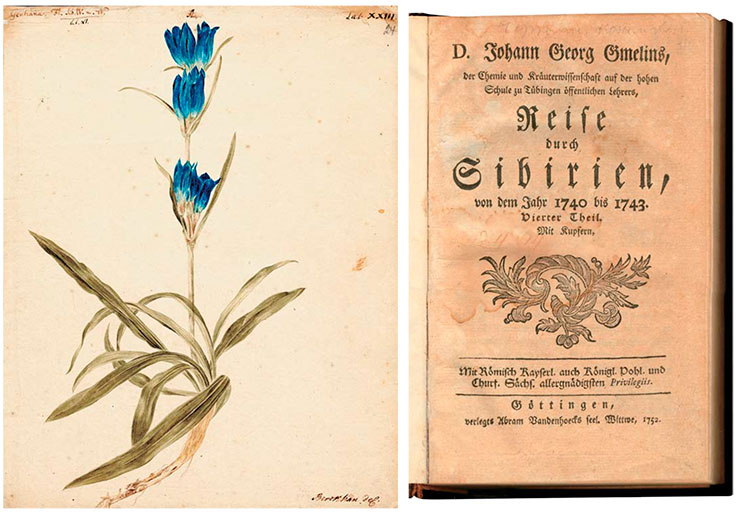
Gmelin could not have known the new principles underling the binary naming of plants because they appeared when he was traveling across Siberia. So he forever remained on the outdated positions of systematics, which were progressive ten or fifteen years before.
At an annual meeting of Petersburg Academy, the Russian botanist, Academician Franz Josef Ruprecht (1865) described the works of Johann Georg Gmelin as follows: “…extremes of cold and heat, which man and animals are able to endure and which far exceeded the measure prescribed by Boerhaave; the lowering of isothermal lines to the east; the never-thawing soil in Yakutia and on the Argun; the spread of chernozem in Siberia; the sinking of the Caspian Sea; the barometric descriptions of heights; and many other observations and discoveries were, in part, first noted by Gmelin. But here we confine ourselves to appreciating Gmelin’s only botanical work dedicated to the Siberian flora. This truly classical creative work contains 1,178 plants and 300 drawings. It was the first to determine and depict a multitude of plants outstanding for that time… In his Flora Sibirica, we find the first shaky attempts at developing a floral geography of Siberia, based on extensive visualization; the border of ordinary European plants was drawn as far as the Yenisei, and the similarity was noted between Asian and American breeds. Whenever I happened to… consult with this creation, I could not help but pay the tribute of sincere surprise to Gmelin’s excellent gift of observation and presentation of special data as well as his talent and thoroughness”Linnaeus was familiar with the great Siberian herbarium collected by Gmelin. It is also possible that he studied Siberian plants directly, when he received them from his students – the Demidov brothers, who were the well-known Russian industrialists. Another Russian student of Linnaeus, the botanist Aleksandr M. Karamyshev, mentioned 118 plants of the Siberian flora that grew in Linnaeus’ botanical garden.
Despite their ideological differences, Linnaeus and Gmelin kept up a constant correspondence, and in each letter they would assure each other of friendship and respect. In total, we know about 16 letters from Linnaeus to Gmelin. Their text shows that Linnaeus greatly appreciated Gmelin’s botanical knowledge and engaged in discussions with him about taxonomy and even plant evolution. In one of the letters of 1744, Linnaeus wrote that Gmelin alone discovered as many plants as all the other botanists taken together. Another remarkable phrase of his speaks volumes: “I was reading your Siberian journey for a long time this night; no one is more worthy in botany than you, who spent ten years among the barbarians because of the flora” (quoted from Pekarskii, 1870).
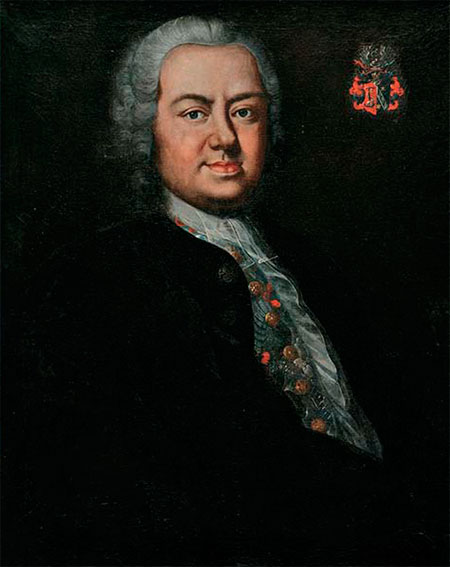 Johann Georg Gmelin was one of the first scientists to discover the plant riches of Siberia. Together with Daniel Gottlieb Messerschmidt, Stepan P. Krasheninnikov, and Georg Wilhelm Steller, he became one of the first naturalists to explore this vast region of the Russian Empire.
Johann Georg Gmelin was one of the first scientists to discover the plant riches of Siberia. Together with Daniel Gottlieb Messerschmidt, Stepan P. Krasheninnikov, and Georg Wilhelm Steller, he became one of the first naturalists to explore this vast region of the Russian Empire.
Was he driven in his endeavor by his duty to the Academy, by high salary, by scientific ambition, or by the longing for discovery, inherent in all mankind? We will hardly ever know.
Exhausted by the despotism of officials and the hardships of travel, he sent a request for permission to return to St. Petersburg as early as in 1738. But above all, there was a thirst for new discoveries: “I had a lot of joy from the new plants that I happened to meet every day, and, before posting my petition, I often thought about taking it back because at the sight of a new plant, I immediately had a fear that this joy could be easily reduced by a quick resolution of my petition.”
References
Bobrov, E. G. Carl Linnaeus. Leningrad, 1979 [in Russian].
Borodaev, V. B. and Kontaev, A. V. At the Origins of the History of Barnaul. Barnaul, 2000 [in Russian].
Chronicles of the Russian Academy of Sciences. St. Petersburg: Nauka, 2000. V. 1. 1724–1802 [in Russian].
Gmelin, Johann Ceorg. Reise durch Sibirien, von dem Jahr 1733 bis 1743. Erster Theil. Göttingen: Vandenhoeck, 1751. S. 259–263.
Lebedev, E. M. V. Lomonosov. Rostov-on-Don, 1997 [in Russian].
Linneus, K. Systema naturæ, sive regna tria naturæ systematice proposita per classes, ordines, genera, & species. 1735. S. 1–12. Lugduni Batavorum (Хаак).
Pekarskii, P. History of the Imperial Academy of Sciences in Petersburg. St. Petersburg, 1870. V. 1. P. 431–457 [in Russian].
Proceedings of the Archive of the USSR Academy of Sciences. Issue. 4. Materials for the history of expeditions of the Academy of Sciences in the 18–19th centuries. Moscow–Leningrad, 1940 [in Russian]
Ruprecht, F. J. Materials for the history of the Imperial Academy of Sciences in terms of botany // Zapiski Akad. Nauk. St. Petersburg, 1865. Issue VII [in Russian].
Sokolov, V.E. and Parnes, Ya. A. At the Origins of Domestic Theriology. Moscow: Nauka, 1993 [in Russian].
Zamolodchikov, D. G. Natural and anthropogenic concepts of modern climate warming // Vestn. Ross. Akad. Nauk. 2013. V. 83. N 3. P. 227–235 [in Russian].
The article uses illustrations from G. W. Steller, Treatise of Folk Medicine, SCIENCE First Hand, N1 (25), 2010


